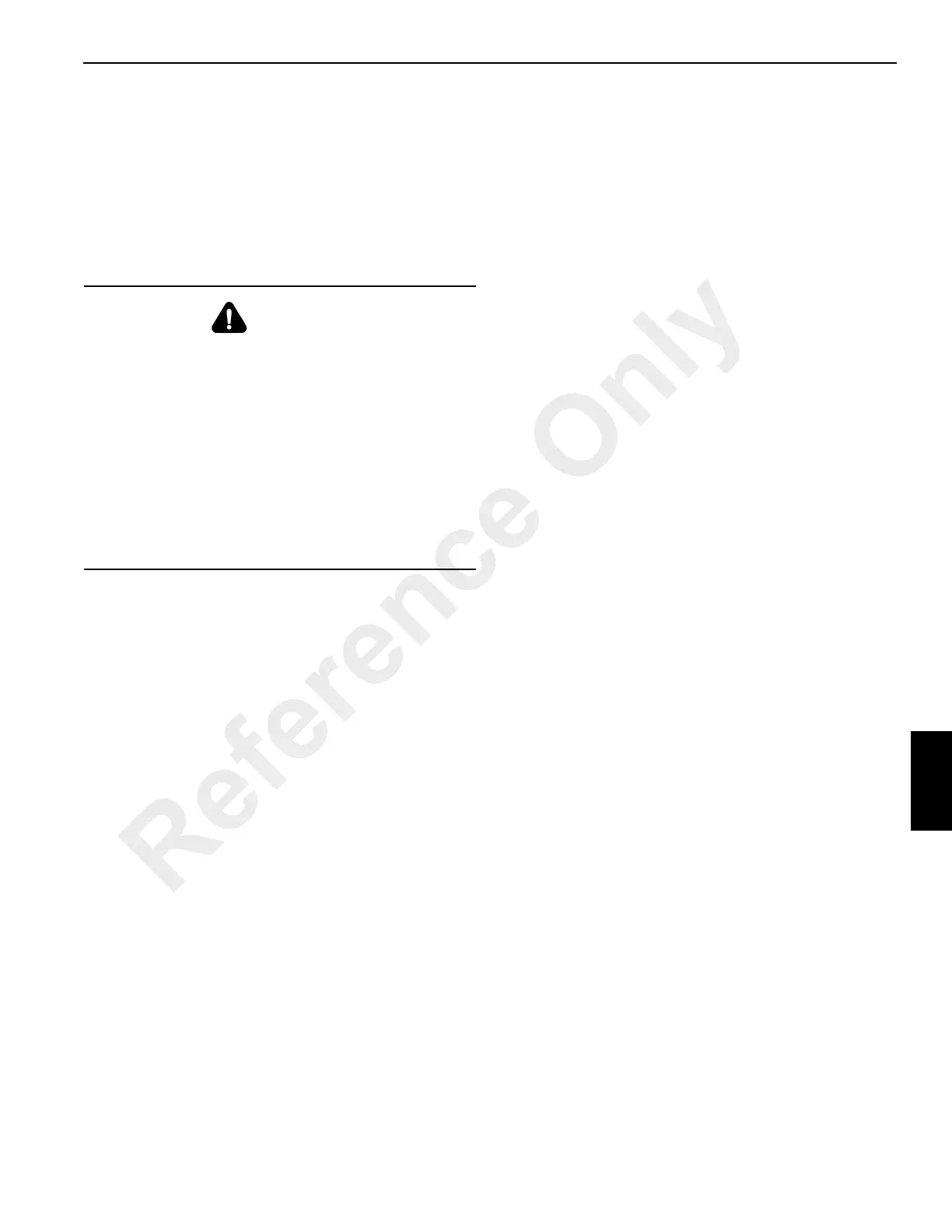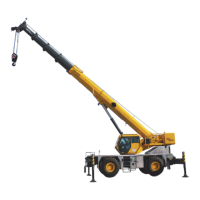GROVE Published 10-21-2010, Control# 198-04 7-23
5540F/YB5515 SERVICE MANUAL TRANSMISSION AND TORQUE CONVERTER
Pressure and Flow Tests
Before completing any of the transmission pressure/flow
tests, make sure that the oil level is correct and at normal
operating temperature.
Test points have been introduced which can be left in place
after testing. Remove blanking plugs as required and fit the
test points. If the test points are to be left in place use Loctite
242 on the threads when fitting. Torque to 21 ft. lb (28 Nm).
Test Points
A. Mainline pressure
B. Forward clutch pressure
C. Reverse clutch pressure
D. Converter inlet/converter relief valve pressure
E. Converter outlet pressure
F. Pump flow (remove filter and fit adapters)
G. Lubrication pressure
H. Cooler flow (flowmeter in line from transmission to
cooler)
I. Load Valve
If testing the complete transmission, the following
procedures are listed in a logical sequence and should
therefore be completed in the same sequence. Also, refer to
the fault finding procedures at the end of the transmission
section for reference to specific tests.
Mainline Pressure
1. Stop engine, connect a 0-300 psi (0-2068 kPa) pressure
gauge to test connector A.
2. Start engine and run at 1000 rpm. With the transmission
in neutral the pressure gauge will show the Mainline
Pressure which should be as shown in Technical Data,
page 7-1.
3. Repeat step 2 and note gauge readings with engine
running at 2000 rpm.
4. Stop engine and remove test gauge.
If the mainline pressure is low, refer to the fault 'Low Mainline
Pressure’ for a list of possible reasons. A high reading could
indicate a faulty pressure maintenance valve.
Clutch Pressure (Forward Clutch Given in Example)
1. Stop engine, connect a 0-300 psi (0-2068 kPa) pressure
gauge to test connector B (item C for reverse clutch).
2. Start engine and run at 1000 rpm. With parking brake
and footbrake firmly applied, select Forward, the
pressure gauge will show the Clutch Pressure which
should be as shown in Technical Data, page 7-1.
NOTE: Note: If the mainline pressure is in the lower part of
the tolerance band (see Technical Data, page 7-1),
then the forward and reverse clutch pressures
should also be in the lower part of the tolerance
band and vice versa.
3. Repeat step 2 and note gauge readings with engine
running at 2000 rpm.
4. Stop engine and remove test gauge
If the clutch pressure is low, the clutch could be leaking. A
leaking clutch is easier to detect when the engine is running
at idle. With the engine at idling speed, check the mainline
pressure and then check the clutch pressure as described
above, if the clutch pressure is 1.7 bar (25 psi) less than the
mainline pressure, then the clutch is probably leaking. Refer
to the fault 'Low Clutch Pressure’ before dismantling the
clutch.
A high reading could indicate a faulty pressure maintaining
valve.
Pump Flow
1. Stop engine, remove transmission filter, and screw
adapter X on to the threaded spigot. Fit test adapter Y
and secure with adapter Z. Connect flowmeter W.
2. Start engine and run at 1000 rpm. With the transmission
in neutral the flowmeter will show the Pump Flow which
should be as shown in Technical Data, page 7-1.
3. Repeat step 2 and note gauge readings with engine
running at 2000 rpm.
4. Stop engine and remove test adapters, refit filter.
If the pump flow is low, refer to the fault Low Pump Flow.
WARNING
Fine jets of hydraulic oil at high pressure can penetrate
the skin. Do not use your fingers to check for hydraulic oil
leaks. Do not put your face close to suspected leaks. Hold
a piece of cardboard close to suspected leaks and then
inspect the cardboard for signs of hydraulic oil. If hydraulic
oil penetrates your skin, get medical help immediately.
Take care when disconnecting hydraulic hoses and
fittings as the oil will be HOT.
DO NOT go underneath the machine with the engine
running. Switch off the engine, apply the parking brake
and chock both sides of all wheels before going
underneath the machine.
Reference Only

